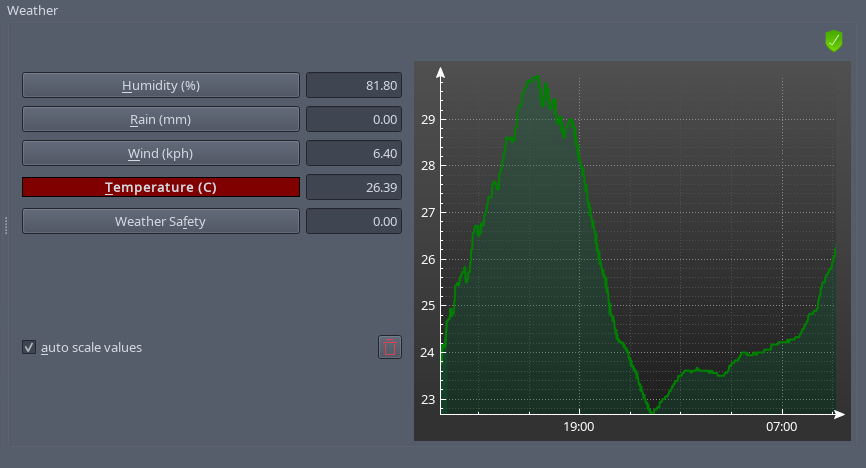
I tried to start up one of my profiles and get a message that indi_ccd is not installed.
I can't get past the inability to install indi-asi on 22.04. I have indi-bin installed since indi-full won't install. When I try to install indi-asi, I get the following message
Not having full support for ASI ccds makes EKOS totally unusable for me.
Read More...
I successfully built (locally using git clone) and ran kstars on both my laptop and desktop. Perhaps the kstars-bleeding package needs to be rebuilt for AMD64 21.04...
Read More...
Sorry -- replied to wrong topic.
Read More...
Jasem,
I missed the e-mail (not showing up on any account, including spam folders). I successfully built kstars locally on both the laptop and the desktop and both instances are working well.
Maybe a rebuild of the AMD64 version for Ubuntu 21.04 will be sufficient...
Read More...
I have a similar issue. If I'm reading the backtrace correctly, this appears to be an issue with libQt5Core.so.5.15.2.
I'm trying to run kstars-bleeding 3.5.4+202107081131~ubuntu21.04.1 on two machines recently upgraded to 21.04 with same result.
I have attached a backtrace for reference and have also raised a bug on bugs.kde.org.
Read More...
For anyone interested, I have placed two versions of the script I use to get Davis WeatherLink Live data to a form usable by Weather Watcher on
my Github
Read More...
You can check the status of the driver packages you use on
Launchpad
. Look for a date in May (e.g., 202105....). If the latest is still in April, it hasn't completed the rebuild.
It is, indeed, a PITA that launchpad is working so slowly.
Read More...
I have successfully run ~23 hours using Weather Watcher and my script. See image
I'll work up python script specifically for the Davis WeatherLink Live to use with Weather Watcher. Hopefully, I'll have that up sometime this week.
Read More...
I'm in the process of doing a longer term test.
I get data from my WeatherLink Live via a python script and write data to multiple web pages and an InfluxDB database. I modified the script to create a specific file accessible on my LAN for Weather Watcher to get its readings.
I'll post if I see any instabilities with this approach.
Read More...
I have a permanent pier which only holds the mount between astrophotography sessions. That is, the scope, computer and all but the mount electronics come in after every session. Among the electronics is a Unihedron SQM which is monitored and MPSAS values saved in the FITS header of each image.
I also have a Davis weather station which I monitor with my personal RPi based solution. I see how I can add the data to allow weather monitoring in EKOS/INDI with the Weather Watcher driver.
Since I don't have any automation needs tied into the Weather Watcher, what value will I get out of this operation other than to be able to go to the appropriate INDI tab to see the current conditions? Is anything, e.g., the ambient temperature added to the FITS header?
Read More...
Jasem,
Please take the following as progress feedback.
I trust that all the 20.10 and 20.04 indi packages (and 21.04?) will be regenerated. Today, I found that indi-bin, libindi-data and libindi1 had been updated. That was insufficient to resolve the issue on the laptop which has only been updated with the binaries.
As pawel-soja indicated on github, if I recompile indi and all its libraries, including 3rd party, everything seems to be working OK.
Richard
Read More...
Yes, I did a "sudo make install". I also built and installed libasi and re-built and re-installed indi-asi. No change.
Can you confirm your EFW is a human interface device (hid)? Do you have any udev rules for asi devices?
Read More...
Basic Information
-
Gender
Male -
Birthdate
01. 12. 1954 -
About me
Early days in astronomy/astrophotography, experienced Linux user
Contact Information
-
State
Texas -
City / Town
Montgomery -
Country
United States



